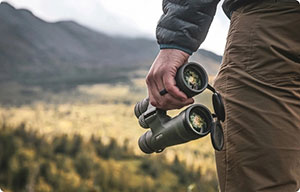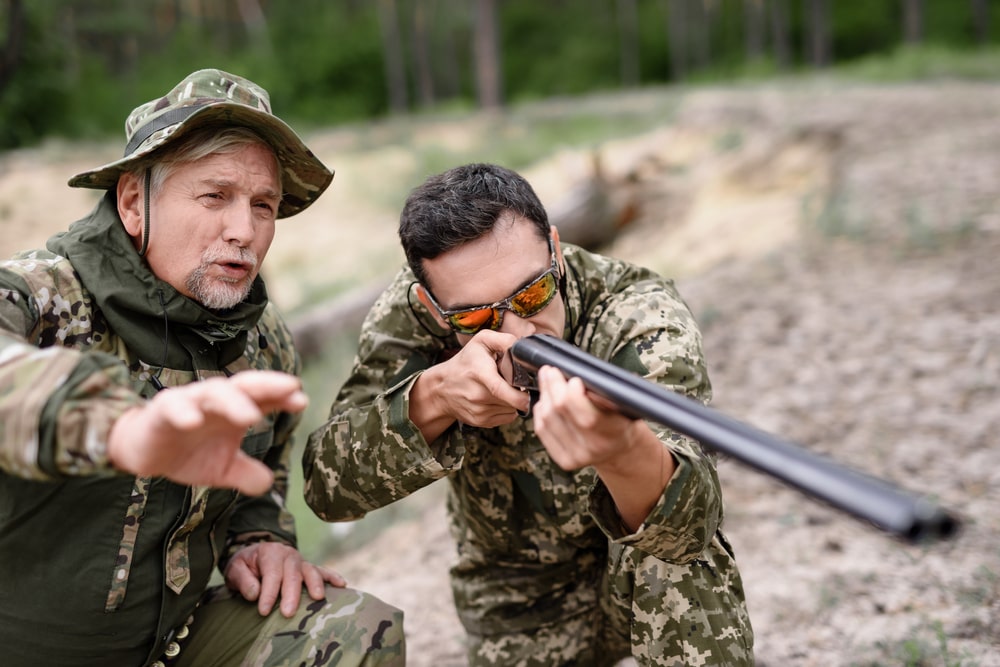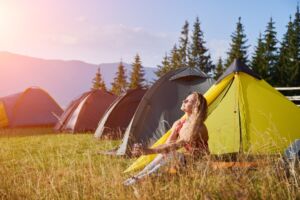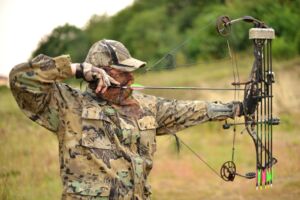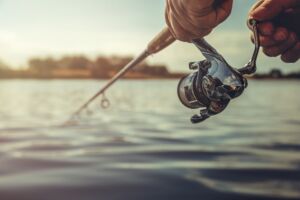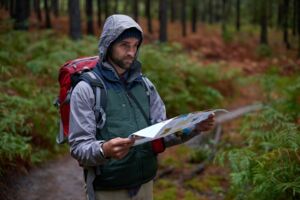Alberta, with its diverse landscapes ranging from the expansive prairies to the rugged Rocky Mountains, offers some of North America’s most exceptional hunting opportunities. Whether you’re a seasoned hunter or just starting out, navigating the regulations and understanding local best practices is necessary to ensure an experience that’s not just successful but also ethical. This comprehensive Alberta hunting guide will walk you through the ins and outs of hunting in Alberta and give you everything you need to plan your next adventure in this beautiful province.
Table of Contents
Why Choose Alberta for Your Hunt?
Alberta’s reputation as a premier hunting destination is well-earned. The province boasts healthy populations of various big game animals, including elk, moose, deer, black bears, and even bighorn sheep and mountain goats. The commitment to wildlife management ensures sustainable hunting practices, contributing to generous animal numbers and high success rates for hunters.
Beyond the thrill of the chase, an Alberta hunt offers breathtaking scenery, a chance to connect with nature, and the kind of challenge that creates lasting memories.
Essential Regulations and Licensing
Before you even think about packing your gear, it’s vital that you take time to understand Alberta’s hunting rules and regulations. The province operates under strict rules designed to manage wildlife populations and ensure hunter safety.
Licensing Requirements
To hunt in Alberta, you must possess a valid Wildlife Identification Number (WIN) card. This card is your unique identifier and is required to purchase any hunting licenses or wildlife certificates. Once you have your WIN card, you need to purchase appropriate licenses for the species you plan to hunt.
Hunter Education
All first-time hunters in Alberta and those who are coming from out of province are required to provide proof of a valid hunter education certificate. In Alberta, hunters can complete the Alberta Conservation and Hunter Education course, which is available online and covers critical aspects of hunting such as firearm safety, ethical practices, wildlife identification, and conservation principles.
The Alberta Guide to Hunting Regulations
The Alberta Guide to Hunting Regulations, published annually, is your go-to resource for all the rules you need to know about hunting in Alberta. It details open seasons, bag limits, hunting zones, legal hunting methods, and general provisions. It’s important that you review the most current version of this guide prior to every hunting season, as regulations can change from year to year. Pay close attention to:
- Season Dates: Specific dates apply to different species and Wildlife Management Units (WMUs). These are often split into archery, general rifle, and sometimes, muzzleloader seasons.
- Bag Limits: This specifies the maximum number of animals of a particular species that you’re allowed to harvest during a given hunting season.
- WMUs: Alberta is divided into WMUs, each with its own specific regulations, season dates, and sometimes draw requirements. Knowing which WMU you plan to hunt is vital.
- Legal Equipment: Regulations specify which firearms, bows, and ammunition types hunters are permitted to use.
- Restricted & Prohibited Areas: Understand where hunting is not permitted, such as provincial parks, ecological reserves, and certain private lands without permission.
- Reporting Requirements: In some cases, successful hunters are required to report their harvest.
Planning Your Hunt
Alberta offers a variety of hunting opportunities throughout the province, each with its own unique challenges and rewards. Knowing what you want to hunt and when is a key part of your planning process.
Big Game Species in Alberta
- White-Tailed Deer: Abundant through much of the province, especially in agricultural and mixed forest zones. They’re known for their elusive nature and impressive antlers.
- Mule Deer: Often found in more open, broken terrain, particularly in southern and central Alberta. These are distinguished by their large ears and bifurcated antlers.
- Elk: Elk hunting is highly sought after in Alberta. Elk are found in the foothills, mountains, and some northern forested areas.
- Moose: Predominantly found in the northern forests and marshy areas, moose offer a challenging hunt and provide a substantial amount of meat.
- Black Bear: Found across most forested regions of Alberta, black bears are typically hunted in Alberta during the spring and fall seasons.
- Bighorn Sheep & Mountain Goats: These hunts are typically in the Rocky Mountain areas and are highly regulated, often requiring special draw tags due to their limited populations and challenging terrain.
- Cougar: Cougars are a specialized hunt that requires specific licensing and in most cases, tracking with the assistance of hounds.
Understanding Hunting Seasons
- General Seasons: These are open to all eligible hunters who purchase the required license. Many deer and bear seasons fall into this category.
- Draw Seasons: For species like elk, moose, and bighorn sheep, and for specific WMUs, licenses are often allocated through a draw system. Hunters apply for these draws months in advance, and tags are awarded through a lottery. Success in these draws can vary greatly depending on the species and WMU.
- Archery Seasons: Many big game species have early archery-only seasons, allowing bowhunters to pursue animals before the general rifle seasons open. This can offer a unique challenge and a different hunting experience.
- Youth Seasons: Special opportunities and regulations may exist for youth hunters, encouraging the next generation to hunt ethically and responsibly.
You’ll find detailed season dates for all species and WMUs in the official Alberta Hunting Guide, particularly within the Big Game Seasons section.
Where to Hunt: Public vs. Private Land
Understanding land access is vital for hunting ethically and legally in Alberta.
Public Land
Alberta offers vast tracts of public land, including Crown land, provincial forests, and some portions of parks where hunting is permitted. These areas provide excellent opportunities, but hunters need to be sure they understand specific access rules, as well as temporary closures. Respecting the land itself and those who share it is also absolutely essential. When navigating public land, maps from Alberta Sustainable Resource Development or the iHunter app can be invaluable.
Private Land
Much of Alberta’s productive hunting habitat is on private land, particularly in agricultural regions. To hunt on private land, you must obtain explicit permission from the landowner before you hunt. This is not just a courtesy; it’s a legal requirement. Building relationships with landowners can open up incredible hunting opportunities and ensure a respectful experience for everyone involved. Always leave gates as you found them, avoid damaging crops or property, and clean up after yourself.
Outfitters and Guided Hunts
For those unfamiliar with the province or for those seeking a specialized hunt for a particular species, engaging a licensed outfitter can be an excellent option. Outfitters provide experienced guides, access to prime hunting areas, lodging, and help with game retrieval and processing. They can greatly increase your chances of success and provide an unparalleled hunting experience. At Storm Mountain Outfitters, we provide guided hunts across Alberta and offer expertise in a variety of big game pursuits.
Essential Gear for Your Hunt
No Alberta hunting guide is complete without a list of the gear you need to ensure a successful hunt. Use the checklists below to prepare for your next hunting adventure.
Clothing and Layering
- Base layers: Moisture-wicking materials to keep you dry.
- Mid layers: Insulation for warmth, such as fleece, down, and synthetic puffers.
- Outer shell: Waterproof and windproof outer layers to protect against the elements.
- Camouflage: Choose patterns appropriate for the terrain you’ll be hunting in.
- Footwear: Choose hunting boots that are durable, waterproof, and comfortable.
Firearms & Archery Equipment
- Rifle/shotgun: Choose a calibre that’s appropriate for the game you’re pursuing. Ensure it’s sighted in and that you’re proficient with it. *ALWAYS ADHERE TO LEGAL REQUIREMENTS FOR AMMUNITION TYPE AND MAGAZINE CAPACITY.
- Ammunition or arrows: Bring enough for practice and for the hunt. Ensure you have the right ammunition for your weapon and for the game you’re hunting.
- Optics: Binoculars and a spotting scope are invaluable for locating game, especially in open country or mountainous terrain.
- Bow: For archery hunters, ensure your bow is properly tuned and that you’re consistently accurate at hunting distances.
Navigation & Safety Gear
- Maps & GPS: Even with modern technology, always carry a physical map and a compass, and make sure you know how to use them. A reliable GPS or smartphone app with downloaded maps is important for navigation, as well—especially off-trail.
- First-Aid Kid: Carry a well-stocked kit for minor injuries and emergencies.
- Survival kit: Ensure it includes a whistle, a fire-starter, an emergency blanket, cordage, and a multi-tool.
- Headlamp/flashlight: Also, ensure to pack extra batteries.
- Knife: Make sure your knife is sharp and durable for field dressing.
- Game bags: Game bags will help you ensure your meat is protected after harvest.
- Bear spray: This is absolutely essential, especially when hunting in bear country. Make sure you know how to use it before your hunt.
- Communication device: A satellite phone or two-way radio is important for hunting in areas without cell service.
Ethical Hunting and Conservation
Hunting in Alberta isn’t just about the harvest; it’s deeply rooted in conservation and ethical principles. These are principles that should be adopted by every hunter in Alberta.
Fair Chase Principles
- Respect for wildlife: Hunt animals fairly, ethically, and responsibly. Avoid taking unethical shots that could wound an animal without recovering it.
- Respect for the land: Leave no trace. Pack out everything you pack in, and minimize your impact on the environment.
- Respect for other hunters: Be mindful of other hunters in the area and avoid interfering with their hunt.
- Respect for non-hunters: Represent the hunting community positively.
Wildlife Management and Conservation
Hunters play a critical role in wildlife conservation. License fees and excise taxes on hunting equipment directly fund wildlife management programs, habitat preservation, and research. By adhering to regulations, hunters help ensure sustainable populations for future generations.
Post-Harvest Responsibilities
- Retrieval: Be prepared to retrieve your animal, which can sometimes be challenging depending on the terrain.
- Field dressing and meat care: Prompt and proper field dressing is necessary to preserve the quality of the meat, especially in warmer temperatures.
- Legal requirements: Understand specific tag validation and reporting requirements for your harvested animal.
Hunter Safety in Alberta
The safety of yourself and other hunters is the most important consideration when hunting in Alberta. Follow these guidelines to ensure a safe, successful hunt.
Firearm Safety
Always treat every firearm as if it’s loaded. Keep the muzzle pointed in a safe direction, keep your finger off the trigger until you’re ready to shoot, and be sure of your target and what’s beyond it. Ensure firearms are always transported safely and stored according to regulations.
Wildlife Encounters
Be aware of your surroundings, especially in bear country. Make noise while hiking, carry bear spray, and know how to react to an encounter. Understand the difference between defensive and predatory behaviour.
Environmental Hazards
- Weather: Be prepared for sudden changes in weather, including snow, rain, and cold temperatures. Hypothermia is a real risk when hunting in winter or colder weather throughout Alberta.
- Terrain: Be mindful of rugged terrain, slippery conditions, and potential falls, especially in the mountains and foothills.
- Water safety: Exercise extreme caution when hunting around rivers, lakes, and other bodies of water.
- Getting lost: Always carry navigation tools and know how to use them. Share your hunt plan with someone you trust before you leave.
Making Your Alberta Hunting Experience Unforgettable
Hunting in Alberta is more than just a sport; it’s an immersive experience that connects you with nature and tests your skills. From the expansive prairies where deer roam, to the dense forests harbouring moose and bear, and the majestic mountains where elk and sheep challenge the most determined hunters, Alberta offers a diverse canvas for your outdoor adventures.
By meticulously planning, understanding and respecting regulations, and prioritizing safety, you’ll ensure a successful hunt and contribute to the rich legacy of conservation in this beautiful province. Whether you choose to go it alone or embark on a guided adventure with an outfitter like Storm Mountain Outfitters, this Alberta Hunting Guide is your starting point for a memorable experience.
Get ready to explore the wild heart of Alberta and create stories that will last a lifetime.
Want to learn more about guided hunting adventures or the gear you need for your next Alberta hunt? Contact our outdoor experts today.

